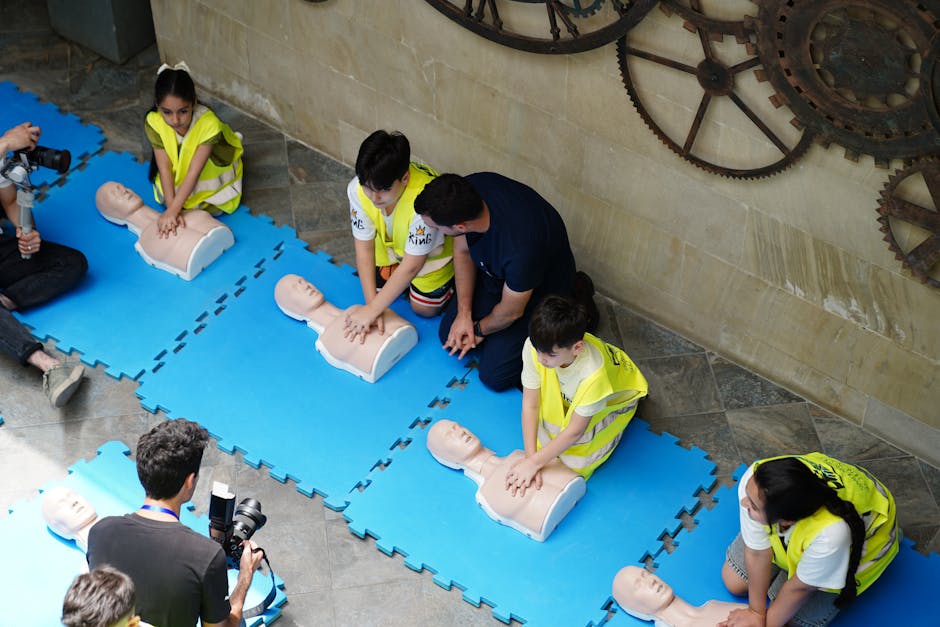
In today’s interconnected world, the proliferation of substandard and falsified medical products poses a significant threat to public health globally. The World Health Organization (WHO) has recognized this challenge and has been at the forefront of combating the circulation of these dangerous products. In October 2025, the WHO released an updated training toolkit to help trainers effectively identify and manage the risks associated with such products. This guide delves into the core recommendations of the WHO’s new release, providing a comprehensive understanding of how to identify substandard and falsified medical products in the current global context.
Understanding Substandard and Falsified Medical Products
Substandard and falsified medical products are medicines and other health-related products that do not meet quality standards or are deliberately misleading in terms of their identity, composition, or source. These products can result in treatment failures, increased resistance to medications, and even fatalities, undermining public trust in healthcare systems.
WHO’s 2025 Toolkit: Key Features
The WHO’s latest toolkit is an essential resource for healthcare professionals, regulatory authorities, and educators. It has been designed to provide at-a-glance guidance as well as in-depth training materials for a variety of users. Here are some of the key features:
- Interactive Modules: The toolkit includes dynamic modules that engage learners with real-world scenarios and case studies.
- Comprehensive Guides: These guides offer a step-by-step approach to identifying substandard products, focusing on visual and sensory cues.
- Collaboration Tools: Features to encourage collaboration across borders, fostering the sharing of best practices and intelligence on suspected products.
- Updated Regulatory Framework: An overview of the latest international regulations and guidelines to ensure compliance and effective enforcement.
Identifying Substandard and Falsified Medical Products
The identification process involves multiple steps, requiring both awareness and practical action. Here’s how professionals can identify problematic medical products:
Visual Inspection
Performing a thorough visual check is the first line of defense. Look for irregularities in packaging, such as:
- Misspellings or grammatical errors on labels.
- Inconsistent or low-quality print.
- Unusual packaging or differences in color, shape, or size compared to authentic products.
- Missing or malformed security features, like holograms or QR codes.
Validation of Source
Verifying the legitimacy of the supplier and the product through official channels can prevent the purchase and distribution of fake products. Steps include:
- Ensuring the supplier is registered and licensed with relevant health authorities.
- Cross-checking product registration numbers with official databases.
- Contacting manufacturers directly to verify product authenticity.
Pharmacovigilance
Implement robust pharmacovigilance practices by tracking and reporting adverse effects quickly. This process involves:
- Establishing clear reporting lines within healthcare institutions.
- Utilizing national and international reporting systems to share findings.
- Encouraging patients and healthcare providers to report suspected products.
The Role of Technology
Technological advancements have made it easier to track and validate medical products. The WHO encourages the adoption of these technologies to enhance detection capabilities:
- Blockchain: A secure method for tracking the product’s journey from manufacturer to consumer, ensuring authenticity at every stage.
- Mobile Verification Apps: Allow consumers and healthcare professionals to scan QR codes and verify product information instantly.
- : Though not the focus here, -driven analytics provide insight into patterns that might indicate the distribution of falsified products.
Global Collaboration and Policy Development
The fight against substandard and falsified medical products requires a global effort. The WHO toolkit emphasizes the importance of:
- Collaboration between countries to strengthen border controls and customs inspections.
- Harmonizing international standards to ensure consistent regulation and enforcement.
- Implementing educational programs to raise awareness among both healthcare providers and the general public.
Impact on Public Health
The circulation of substandard and falsified medical products can devastate public health systems by causing harm to patients and reducing the efficacy of genuine treatments. Addressing this issue is crucial for ensuring the safety and trustworthiness of healthcare delivery worldwide.
FAQ
What is the WHO doing to combat falsified medical products?
The WHO is actively developing resources like the 2025 toolkit to aid training and support the identification of falsified medical products. These efforts also include collaboration with international organizations to standardize practices and regulations.
How can healthcare professionals help in identifying falsified products?
Healthcare professionals can help by staying informed about the latest guidelines, participating in training programs, and being vigilant in inspecting medical product packaging and documentation for any irregularities.
Are there legal repercussions for distributing falsified medical products?
Yes, distributing falsified medical products is illegal and subject to severe penalties, including fines and imprisonment. Regulatory authorities across the globe enforce strict measures to prevent such activities.
Can consumers identify falsified products?
Consumers can play a role by checking for obvious packaging discrepancies and using mobile apps to verify product information. Being informed and cautious is crucial in avoiding falsified products.
What are the potential health risks associated with these products?
Substandard or falsified medical products can lead to treatment failure, drug resistance, harmful side effects, and even death. It is vital to use verified products to ensure safety and effectiveness.
Conclusion
The WHO’s 2025 toolkit represents a significant advancement in the fight against substandard and falsified medical products. By empowering healthcare professionals and regulatory bodies with the knowledge and tools they need, the WHO aims to reduce the prevalence of these dangerous products and enhance public health safety globally. Vigilance, education, and collaboration remain the pillars of this ongoing battle, ensuring that medical treatments remain safe and effective for all.


